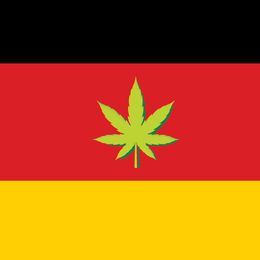Everybody knows what 420 means in the Indian context. But in American parlance it is something very different: four-twenty or 4/20 or April 20 denotes cannabis celebration; its cultural references are rooted in the hippie culture of the 1960s and 1970s. This year, on April 20, thousands gathered at Berlin’s Brandenburg Gate for a collective “smoke-in” in a farcical throwback to the fall of the Berlin Wall in 1989. Only this time they were not celebrating the collapse of the Iron Curtain, but the part legalisation by Germany of cannabis (or marijuana, weed, pot, dope, grass…) for recreational use.
For just when you thought that Germany was all about economy, efficiency, automobiles and autobahns with only the Oktoberfest breaking its dour discipline, the country decided to go cool. On April 1, oddly, the ruling coalition partly lived up to its agreed agenda of legalising cannabis for adult recreational use (now that’s an election promise worth its grass). I say partly because licensed sale is still not allowed though a pilot project is on the cards. But even if adult Germans have to still sidle up to their local paan-wallah, they can now hold 25 grams of the stuff in public and 50 grams at home; besides, they can now cultivate three plants in their back garden. Cannabis clubs of up to 500 members will soon mushroom across the country, supplying up to 50 grams to members per month. The government hopes that all this will dent the black market and enable better public health, but critics point to obvious dangers of increased drug consumption.
Of course, there are caveats: no cannabis consumption for under-18s and within 100m of schools, playgrounds and kindergartens; Deutsche Bahn, the German railways, has banned cannabis use at its train stations; and Bavaria will still not allow marijuana consumption at its Oktoberfest beer-drinking orgy, which by some strange calculation, is called a “family festival.” The Bavarian prohibition seems a bit thick, considering that six million litres of relatively strong beer will be consumed over two weeks; in other words, you can get drunk, but not high.
With this pivot, Germany, one of the most conservative countries in Europe, joins Malta and Luxembourg in liberalising recreational cannabis use. Several other models of cannabis regulation are in play: The Netherlands allows consumption in its famed coffee shops and possession up to five grams; Spain tolerates cannabis clubs and several others, particularly Belgium and the Czech Republic are considering more liberal regimes and will no doubt be encouraged by the German example. Canada, Uruguay, Portugal and Jamaica are some of the other great weed destinations outside Europe. A patchwork of regulations governs cannabis in the US: though prohibited under federal law, it is allowed for recreational and medical use in 24 states (plus the District of Columbia) while another 14 allow medical use only.
In a recent move, the US federal authorities are proposing to move cannabis from a prohibited list that includes heroin and LSD to a less tightly controlled list of drugs permitted for medical use. President Joe Biden, who has earlier pardoned thousands convicted federally for marijuana possession, would no doubt favour this move. A softer federal control on marijuana, following up on the cancellation of more than two lakh student loans, will be effective outreach to younger, left-leaning voters, a crucial segment in Biden’s re-election bid. It remains to be seen how far all this will counter the spreading discontent and disenchantment with the president’s handling of Israel’s war on Hamas in Gaza.
Yes, you would have to be smoking something to connect Gaza and marijuana, but there it is.
The writer is former high commissioner to the UK and former ambassador to the US.


